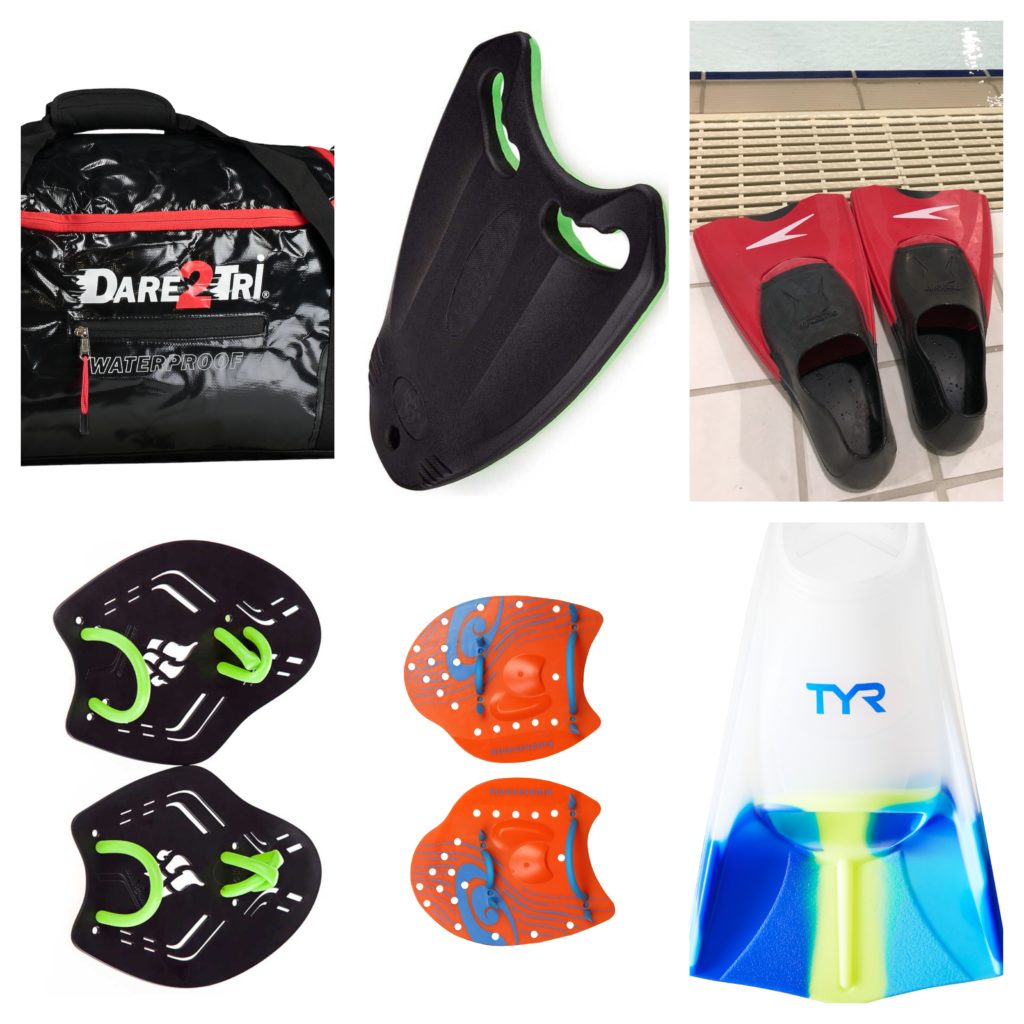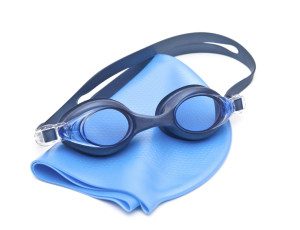What equipment should be in a triathlete’s swim bag?
Beginner triathletes are often overwhelmed by the equipment they need for swimming. We look at the basics of what should be in your swim bag, and look at some other pieces of equipment that might be worth adding to your swim-training arsenal.
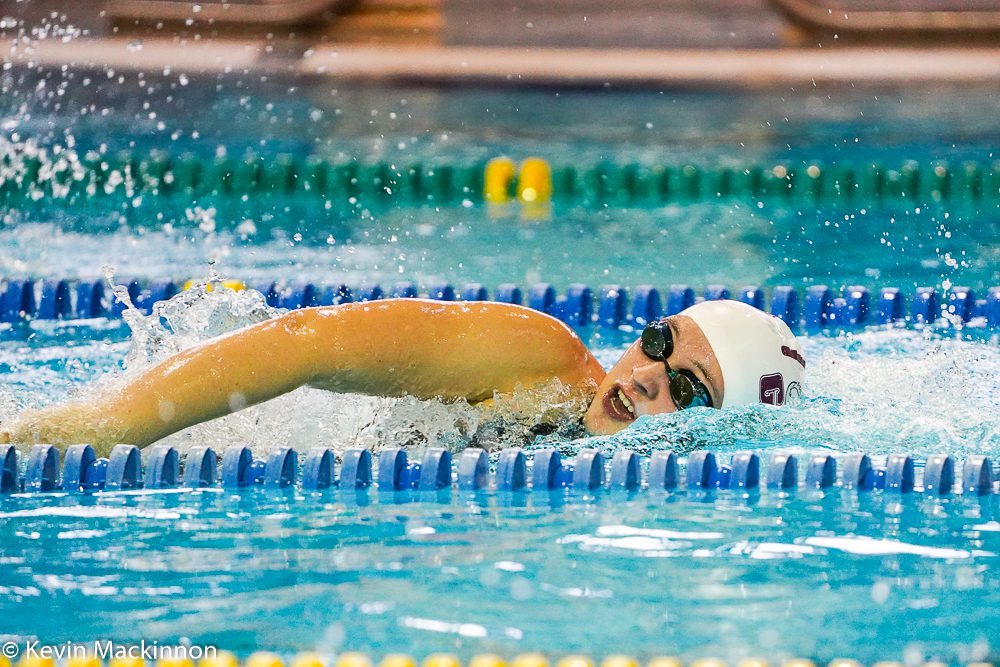
You see experienced swimmers arrive at the pool with a bag full of gear. They scatter the contents on the pool deck, then hit the water for their warm up. So what is all that gear, and should you be using it? Absolutely!
The Basics
Goggles
We’re just going to assume that you’re fully aware that swimming without goggles in a pool is no fun – within a few lengths your eyes will be burning and you’ll be on your way to the showers. A pair of goggles that doesn’t leak or fog up is a critical part of your swim bag. A spare set is every bit as crucial!
Swimsuit
Yes, we know that you know you need one. Where we’re coming from here is that you want a quality, training-oriented swim suit. Nothing baggy that will act like a parachute, slowing you down and making it even more difficult to maintain good form.
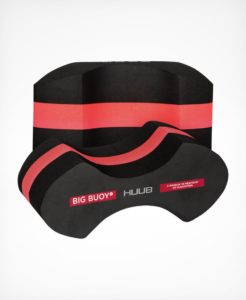
Pull Buoy
The pull buoy is probably the most underappreciated and most useful piece of swimming gear out there. Not only does it eliminate your kick, it gives you added buoyancy (hence pull ‘buoy’), allowing your body to glide along the top of the water much more easily than it could without it.
This more closely emulates the ideal body position in freestyle, so you get the feel of what you should be constantly striving for when you don’t have the pull buoy in between your legs.
An added benefit to the pull buoy is that since you don’t have to think about kicking, and your body position has fixed itself, you can shift more of your focus over to improving the other areas of your stroke. You can zero in on your hand entry and pull, and see what adjustments can be made to be more efficient.
The pull buoy also gives you a better sense of how effective body roll is in swimming. You’ll find that if you consciously focus on rotating your hips along with every stroke, it will make you go much faster.
Using a pull buoy is essential for anyone who wants to improve in the water, but specifically the triathlete who wants to use his or her legs as little as possible.
The pull buoy also replicates the feeling you’ll have while wearing a wetsuit, too, which will help your open water swimming.
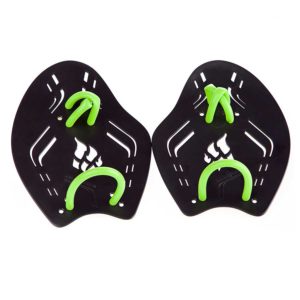
Paddles
Paddles are a great tool to implement into long freestyle set to mix things up, and there’s plenty of benefits to doing so as well (besides feeling like a swordfish slicing through the water).
Strapping on a pair of paddles will add resistance to your stroke, helping you become more powerful in the water. It also gives you an idea of what makes you most efficient in the water – you’ll generally be going faster than you would normally, so every part of your stroke is exaggerated. If there’s a part of your catch, pull or entry that’s limiting you, it will become abundantly clear.
This also applies if you’re constantly having trouble keeping one of your paddles on. Remove the wrist strap (if there is one), and if one of the paddles keeps coming off, you’ll know you’ve got some technical things to work on.
One thing to be aware of when using paddles is having ones that are too big – typically referred to as “dinner plates”. While these are great for 25-metre sprints and feeling a huge burst of speed, they can cause injury if they’re used too often or if you have a bad shoulder. To start off, use paddles slightly bigger than the size of your hands and go from there.
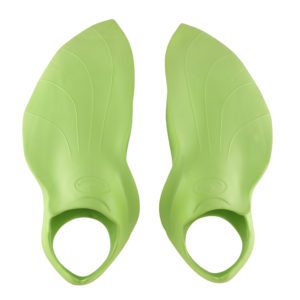
Fins
Out of all the different pieces of equipment available to swimmers, fins are generally the most popular. They give you the ability to travel through the water at speeds you just wouldn’t be able to hit on your own, and make you feel like you have the underwater dolphin kick ability of Michael Phelps (even if you’re actually pretty bad at it).
Yes, fins are fun. But, there are also several benefits to them.
One great use for fins when it comes to a typical triathlete is that they give you the ability to focus in on your stroke technique while maintaining speed. Normally, when you’re working through a drill, you’re going much slower than you normally would be. However, when using fins, you can maintain your typical swim speed while isolating the one part of your stroke you want to focus on.
Additionally, even if you want to do a drill slowed down (such as single arm freestyle), having fins on just to keep your balance and a high body position will help you focus more on the drill and less on trying not to sink.
On top of this, fins (or “flippers”) are also a great way to improve ankle flexibility and thus improve your kick, and they give you the ability to have a more efficient workout if you’ve only got a small window of time. It’s easier to get your heart rate up, and keep it there, with them on.
One important thing to avoid with fins: don’t do a long freestyle set with them if you’re not going to take full advantage. If it’s too tiring to keep kicking, and you just start dragging them behind you, it’s going to hinder your body position and promote poor technique.
Kickboard
Most pools will have boards available to use, so this is one item you’ll see many swimmers leave out. It doesn’t hurt, though, to have your own board if you regularly attend a pool that doesn’t offer kickboards. If you’re off to a training camp and aren’t sure if you’ll have access to a board, slip one in to your bike case – it’s super light and can even help protect your bike.
While triathletes tend to try and avoid kicking too much, an efficient kick can be a huge help to your stroke. You should try to get a short kick set into every workout to work on your kick. Ideally some of that is done without fins, but as noted above, using fins during your kick sets can help ankle flexibility.
Extra bonus stuff
Many coaches swear by some other equipment that might be worth adding to your swim bag as you progress:
- “By taking away the need to rotate to breathe, a snorkel is a useful tool for isolating technical elements of your stroke and positioning your body in the water,” Cam Mitchell wrote in this story on snorkels. “Just make sure you get one designed for swim training, rather than snorkelling at the beach.”
- In this story, Ayesha Rollinson suggests that parachutes and swim bands are a great way to improve your power.
- Swim parachutes are a great power tool, but are more expensive (over $30). I like the parachute because I find that it eliminates any ability to cheat during the hard parts of the arm stroke. The parachute trails behind the swimmer on a strap that clips around the waist. The parachute catches water and creates drag, which forces you pull harder than usual with each arm stroke. Like the paddles, these devices also come with various sizes – larger sizes have larger chutes. Once a swimmer has developed good power and power endurance, they can gradually increase the size of the chute.
- Ankle bands are the cheapest tool because you can make your own. Ankle bands work in the same way that pull boys do, they isolate your arm stroke, but you don’t have the extra buoyancy provided by the pull buoy. This difference makes the ankle band the hardest swim power tool to master. Ankle bands require a swimmer to have an almost perfect body position, excellent balance, good rhythm and good overall swimming mechanics. If a swimmer has most of these requirements in place, then ankle band training can be the most beneficial power training. You can make your own ankle band out of any kind of smooth, elastic material – an old bike tube is perfect. You need a device that will stretch to fit around your feet and then recoil to hold your ankles together snugly. The band trains you to develop the power needed to swim fast without relying heavily on your kick.
- A tempo trainer might be just what you need to achieve the optimal stroke rate.
With files from James Sutherland
